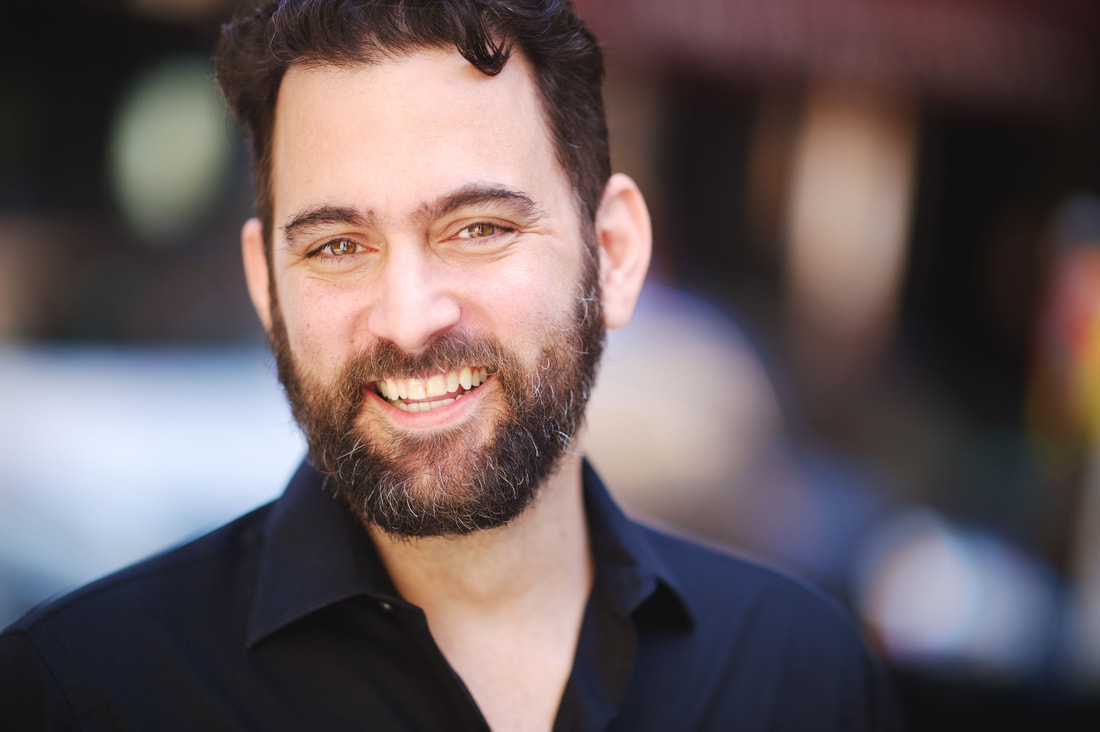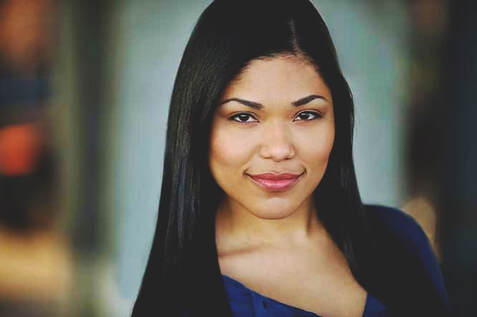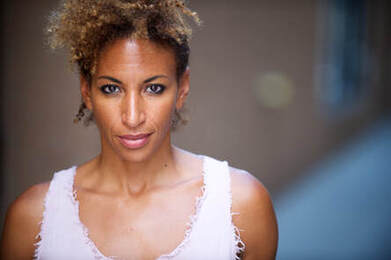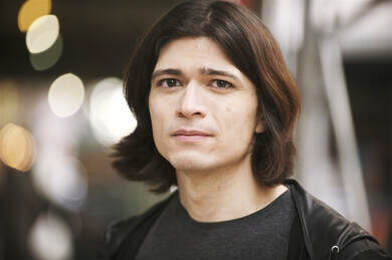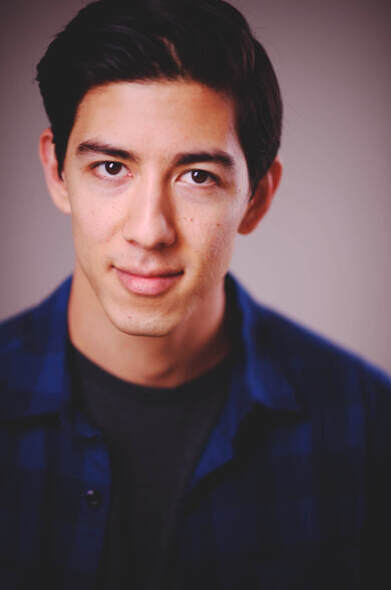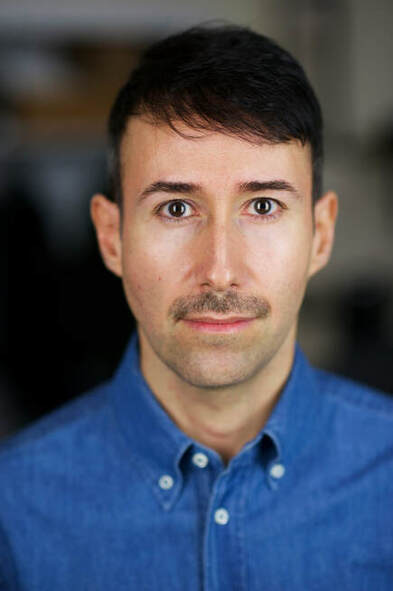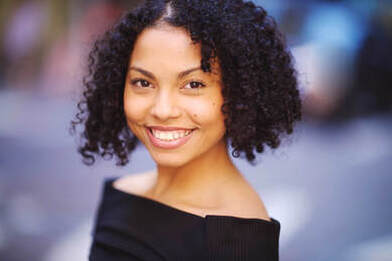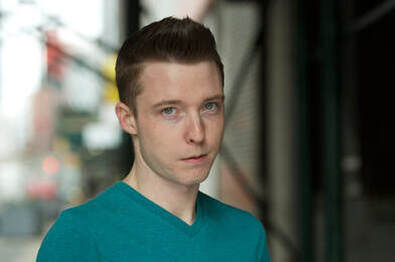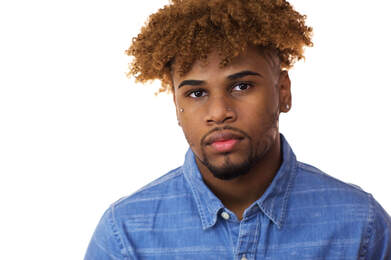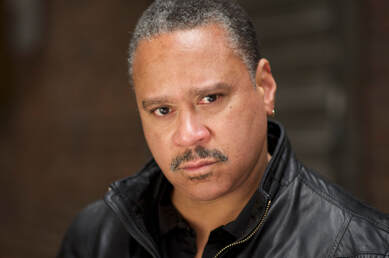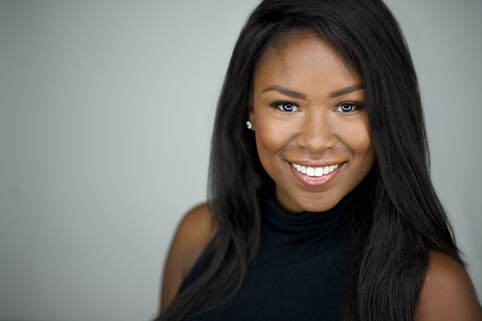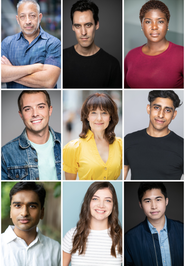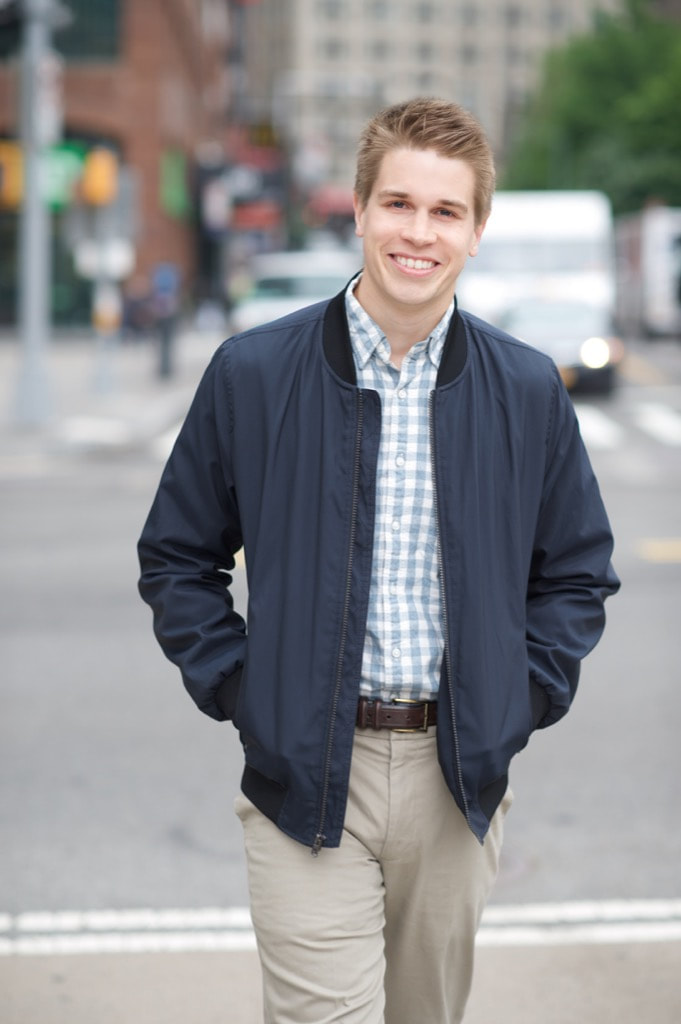|
Everything you need to know about headshots for actors, all in one place.
Need New Actor Headshots?Headshots for ActorsScary Fact: Some actors spend YEARS using shots that aren't taken seriously by casting directors, and they wonder why they never get called in for auditions. They either don't know that their shots aren't good... or they think they have to spend TONS of money for a good one! It is possible to get a great actor headshot without breaking the bank. Here's some of what's covered in this guide:
Let's start off by answering some common questions about headshots:
|
|
1 of 8: Why it's good:
Her expression is very natural – there is no tension in her face. This image has been only lightly photoshopped so you can still see some imperfections on the face, which makes it look real. She looks confident, relaxed and we get a sense that she's an experienced actor. She looks confident in herself, which tells casting directors that she can act. |
2 of 8: Why it's not so good:
He looks uncomfortable and has a weird posture – his head is tilted at an odd angle. The background is distracting with the lights on the left side and the harsh lines on the right. Even though it has not been retouched, that's not a problem here – the biggest problem is that his expression makes him look inexperienced, like he isn't a skilled actor |
|
3 of 8: Why it's good:
It's un-retouched, so he looks very natural in the shot. Casting directors LOVE un-retouched (or minimally retouched) headshots because it shows them what you reallylook like. Now, even though he has a serious expression, there is no tension in his face and he looks like he owns the frame. His hair is cropped off slightly at the top, but that's expected as casting directors know the top of the head is there. The checked shirt could be considered distracting by some, but because it's so dark it doesn't draw the eye. |
4 of 8: Why it's not so good:
All the technical aspect of this shot are good! HOWEVER, his expression looks a bit crazy/confused, making him look like he "doesn't know what he's doing." The expression is probably costing this actor TONS of missed opportunities. We actually created a free guide called "Upgrade Your $400 Headshot to a $1,500 One" that shows you how to direct YOURSELF into great expressions – even if your photographer is unable to do it. |
|
5 of 8: Why it's good:
Her expression is extremely natural, the lighting is very soft, and the background is not distracting. She truly looks confident and relaxed in the photo, as though she's a bright, fun, and friendly actress. |
6 of 8: Why it's not so good:
His expression looks a bit confused and his head is tilted in a slightly unnatural way, making him look awkward. Also, the background is distracting with the lines cutting across; they draw attention away from his face. |
|
7 of 8: Why it's good:
He looks very relaxed with zero mouth tension. His shirt could be considered distracting because of the slight pattern, but it's not very noticeable so it still works. The white background creates a nice contrast so he pops off the image instead of blending in against a dull backdrop. That contrast is what makes the image "pop," and is what captures the eye of casting directors. |
8 of 8: Why it's not so good:
In this photo, the background and lighting are fine. There is a bit of shine on his forehead which could have been minimized, but the biggest issue is that he doesn't seem comfortable or relaxed in the shot. His eyes give it away. He looks like he's "trying too hard" to look intense, which looks unnatural and tells casting directors he's not a good actor (even if he is!). Can you see it? |
What Should an Actor Headshot Look Like?
To put it simply, an actor headshot needs to show you clearly, have a good expression, and look like you spent some money on it. And to really stand out, it needs to show a clear Type (if you're not clear on your Types, here's a 10-Minute Shortcut to Find Your Type).
Low budget, unprofessional headshots tend to perform poorly because casting directors (who look at thousands of headshots a day) can tell right away if you spent money on it and shot with a dedicated headshot photographer.
Their thinking goes, "If an actor has a low-budget headshot (one that doesn't look expensive), they probably don't take their career seriously and won't be worth bringing in."
Low budget, unprofessional headshots tend to perform poorly because casting directors (who look at thousands of headshots a day) can tell right away if you spent money on it and shot with a dedicated headshot photographer.
Their thinking goes, "If an actor has a low-budget headshot (one that doesn't look expensive), they probably don't take their career seriously and won't be worth bringing in."
Here are a few important elements for a great actor headshot:
- Indoor vs. Outdoor: Headshots for actors can be shot indoors or outdoors – it usually won't make much of a difference to casting directors. Indoor headshots are usually done with studio lighting and have either blurry backgrounds or flat backdrops (gray, white, or black are most common, but some include colored backdrops). Outdoor headshots should have the background blurred so you stand out in the frame.
- Smiling vs. Serious: Ideally you should do some of both. If you're worried that your teeth are a bit crooked or slightly yellow, it's still a good idea take some big smile shots because retouching can fix that. If you wear braces, you should still take a smiling shot because casting directors need to know (related: Acting With Braces & How to Book More Work) Smiling shots are called "commercial headshots" and are great for submissions to comedic and friendly roles, or for TV commercials. On the other hand, serious shots, which cover a range of expressions from confident to sneaky, are called "legit shots" and should be used when applying to more serious roles, such as dramatic TV shows and films.
- Specific vs. Generalized: Most actors think they should do a generalized headshot that can be submitted to a wide variety of auditions. This is a huge mistake. It's WAY more effective to shoot a few different specific Type headshots and then submit the most relevant headshot to each audition. Example: if you're submitting for a role to play a psychologist, you'd want to use a completely different headshot than if you're submitting to play a blue-collar construction worker.
- Framing: The framing of your headshot should be at least waist up, but more ideally it should be taken closer, from chest up. Further out than that would be considered a body shot which, although useful for certain things like websites and social media pages, is unlikely to be noticed by a casting director looking through hundreds of shots on their screen. Remember, they're looking at many photos at once at a very small size, and when your photo is shot closer, they can see your face better since it's so small. When they see you more clearly, they'll be more likely to click on your shot and look through the rest of your submission.
-
Horizontal vs. Vertical: In general, vertical headshots are easier to use and most casting directors prefer them. From about 2005-2012, horizontal headshots were very popular, but they've largely been fading since most online casting websites prefer vertical shots to be uploaded. Unless your outfit is not conducive to a vertical shot (meaning you can see cleavage or something else that's distracting below your neck), you should take your headshots vertically.
- Note: for the sake of this blog post, I mostly used horizontal headshots just because they worked better for the layout of the page.
- Natural vs. Studio Lighting: Some actors prefer natural light and some prefer studio light, but most casting directors don't care as long as they can see your face clearly. If the photographer uses specialized lighting to alter the shape of your face (making you thinner, for example), that's a BIG problem. Casting directors hate when actors look different in real life than they do in their headshot, so be sure to avoid that.
-
Background: The background should not be distracting. If you're shooting with real life (as opposed to a flat backdrop) in the background, make sure it's extremely blurred out so you can't tell what's behind you. The sharper the background, the less professional and more distracting your headshot will look. You should also "pop" off the background, meaning if the background is really dark, you should be wearing a lighter color (or the photographer should light you in a specific way) so that you don't blend in with the background.
- If interested, you can download my bonus resource: The Ultimate Guide to Headshot Backdrops for Actors.
- Props: Avoid props and keep your hands out of the shot, unless it's being taken from the waist up. For true actor headshots shot (chest up), your hands should never be in the shot. The only "props" you can have would be glasses if you normally wear them. Keep jewelry and anything else that's not YOU out of the shot.
- Cropping and Dimensions: Actor headshots are usually printed on 8" by 10" paper, so they should be shot with a high-resolution camera so they appear sharp when printed big. It's common to crop off the tip of the hair in headshots for actors, so don't worry if your photographer does this. We'll discuss printing in more detail later.
- Color vs. Black & White: Black and white was done in the past when it was more expensive to shoot and print photos in color, but nowadays since everything is digital, color is the way to go. Casting directors hate getting black and white headshots because it's impossible to know the color of your hair or eyes.
- Should Capture Your Type: An effective headshot will tell a casting director right away how to place you. Are you good at playing detective roles? Young mothers? Business CEO roles? If your headshot is unclear or you don't know what your Types are, casting directors will be significantly less likely to call you in for the audition. Download my bonus resource to discover your Types as soon as today:
Find Your Type... in Just 10 Minutes
Download my special "Find Your Types" Hack
The clearer you are on your Types, the more auditions you'll get with your headshots. This guide shows you how to shortcut the process of finding your Type from months to minutes.
Here's what's included:
Here's what's included:
|
Downloaded by over 1,300 actors so far.
"LOVED this!!! THANK YOU! Types I've narrowed down to - Edgy Business Pro, Punky Mom, Sexy Rockstar, Love Interest, Leading Lady, Sexy Powerhouse Boss, and CEO. Fun and SO HELPFUL! Scheduled another photo shoot now to really capture these characters discovered!! Honestly, THANK YOU, this tool has been invaluable for me!!"
-Kate J.
What to Wear for Acting Headshots?
Wear what you love, as long as it supports your Types.
If you don't like something but someone tells you to wear it, you won't look confident in your shots and you'll probably feel awkward, so always start by choosing things you LOVE.
For an in-depth, detailed guide on what colors and clothing work best for actor headshots, click here.
If you don't like something but someone tells you to wear it, you won't look confident in your shots and you'll probably feel awkward, so always start by choosing things you LOVE.
- In general, it's a good idea to wear solid colors because patterns and logos are often distracting. Layers can add more depth, so open jackets are great additions to outfits.
- You don't need to worry about your pants or shoes since they won't be in the frame, but for your shirt, subtle textures are OK (though they need to be minimal).
- Most colors work fine, but you should stay away from pale colors like white, light gray, light pink, etc., if possible because they can look too bright on camera.
- Be sure your clothing aligns with the Type you're going for. For instance, if you're thinking of doing one business look and one gangster look, bring a professional suit and tie for the business look and a leather jacket and black t-shirt for the gangster look.
For an in-depth, detailed guide on what colors and clothing work best for actor headshots, click here.
How to Pose for Headshots for Actors?
In general, the best poses for actor headshots don't look like you're posing at all. You should always face mostly towards the camera, with about a 40 degree turn to either side being OK.
You can lean in or away from the camera (as long as it's slight) – keep in mind that most photographers will give you general direction such as "Lean in closer," or "Turn to the right," etc., which will ensure you look good and natural on camera.
Avoid crazy poses – especially ones where you're turned and looking back over your shoulder (or you're including your hands in the shot). Keep it simple or casting directors will think you're trying too hard, and they won't take you seriously!
You can lean in or away from the camera (as long as it's slight) – keep in mind that most photographers will give you general direction such as "Lean in closer," or "Turn to the right," etc., which will ensure you look good and natural on camera.
Avoid crazy poses – especially ones where you're turned and looking back over your shoulder (or you're including your hands in the shot). Keep it simple or casting directors will think you're trying too hard, and they won't take you seriously!
How to Prepare for Your Shoot
In order to get a great actor headshot, there are a few key things to keep in mind before your shoot:
Feeling a bit overwhelmed? Stay focused on what matters most with my free Actor Headshot Checklist.
- The right mindset: Go in expecting to get a great shot AND have a fun time, and don't be overly obsessed with capturing the PERFECT shot. This means you should have an open mind – be prepared to try different expressions and body positions. If you're obsessed with only capturing one type of shot, it can make it difficult for you to relax enough to get good expressions.
- A great headshot should look like you: Wanting to look thinner or more glamorous in your headshot than you do in real life might sound good on the surface, but it's a mistake. Casting directors hate when you look different in real life than you do in your headshot, and they'll almost never book you for the role because you've wasted their time – they wanted you for how you looked in the photo! This applies even if your audition was perfect and you memorized every single line. Asking your photographer to use special lighting setups to change how you look will cost you in the long run, so be confident in who you are and what you look like! There is a place for everyone in this industry.
- Bring your clothing and anything needed for the shoot: Headshot photographers almost never carry clothing in their studio, so be sure to plan out what you're going to wear and bring in more than you think you'll need. Also, if you're planning to do different hairstyles or a scruffy and clean-shaven look, don't forget to bring the tools required!
- Plan to arrive early: Arriving late is one of the biggest pet peeves of headshot photographers, and if you're more than a couple minutes late to your shoot, it can eat into your session time. To avoid feeling rushed, be sure to arrive at least 5-10 minutes early (meaning plan ahead for possible traffic delays).
Feeling a bit overwhelmed? Stay focused on what matters most with my free Actor Headshot Checklist.
What if I Don't Like Having My Photo Taken (or I'm Not Photogenic)?
Unfortunately some photographers are not that great at direction, and when you're working with someone like that, a photoshoot can be very awkward.
If you're working with a well-established photographer who provides specific, easy-to-understand direction (like we do at City Headshots), you'll have a much easier time shooting.
But if you're working with a lower-priced photographer or someone who is not that great, you might want to read my Ultimate Guide to Finding Your Best Angles.
That said, I recommend skimming this guide as well: How to Find the Right Headshot Photographer for Your Shoot
If you're working with a well-established photographer who provides specific, easy-to-understand direction (like we do at City Headshots), you'll have a much easier time shooting.
But if you're working with a lower-priced photographer or someone who is not that great, you might want to read my Ultimate Guide to Finding Your Best Angles.
That said, I recommend skimming this guide as well: How to Find the Right Headshot Photographer for Your Shoot
How Much Do Acting Headshots Cost?
In general, you can expect to pay anywhere from $150 to $800 for them, depending on where you are in the country and how many looks you need.
Avoid spending less than $150 because most photographers that charge super cheap rates do so because they don't do great work.
The more expensive the photographer (in general), the better your experience will be and the more usable shots you'll get.
That being said, avoid spending more than $800 because once you get to such levels, you'll find that you're just paying for the photographer's name (some photographers are really great at networking or have just been in the industry for decades).
A good rate to aim for is between $350 and $550 for a two-look actor headshot session (more on "looks" in a moment).
Learn more about headshot cost breakdown here.
Avoid spending less than $150 because most photographers that charge super cheap rates do so because they don't do great work.
The more expensive the photographer (in general), the better your experience will be and the more usable shots you'll get.
That being said, avoid spending more than $800 because once you get to such levels, you'll find that you're just paying for the photographer's name (some photographers are really great at networking or have just been in the industry for decades).
A good rate to aim for is between $350 and $550 for a two-look actor headshot session (more on "looks" in a moment).
Learn more about headshot cost breakdown here.
How Do Professional Actors Get Headshots?
Actors search online and ask their friends for recommendations of photographers to meet with. Choosing a photographer with a great personality is crucial because if you work with someone who's not engaging or boring, it will be very hard to get good expressions.
You might end up with a professional-looking headshot, but if you look uncomfortable or seem like you're trying too hard, casting directors will assume you can't act.
The result? You'll find yourself rarely getting called in for auditions. Learn more about that in my guide: The 7 Keys to a Headshot That Gets Auditions
Here's a simple, 4-step process you can use to find the right headshot photographer for you:
Here's a much more in depth article on how to pick the right headshot photographer for you.
You might end up with a professional-looking headshot, but if you look uncomfortable or seem like you're trying too hard, casting directors will assume you can't act.
The result? You'll find yourself rarely getting called in for auditions. Learn more about that in my guide: The 7 Keys to a Headshot That Gets Auditions
Here's a simple, 4-step process you can use to find the right headshot photographer for you:
- Find at least 10-20 photographers to consider: To find photographers, you can ask anyone you know who already has a headshot or you can search Google and Yelp for "actor headshot photographers."
-
Narrow those 10-20 photographers down to a few top choices: Once you have your list of photographers, you should narrow them down using the following criteria:
- They should specialize in headshots – if they usually shoot weddings or events, that's not a good sign since headshots are such a specialized branch of photography. With headshots, the need to direct and be highly specific is critical, whereas there's little to no directing of expression involved in most other types of photography.
- Their prices should be clear and straightforward – make sure they don't charge hidden fees (be careful of photographers who charge both a "session fee" and a "per image fee" – it should be just one or the other, not both). Also, sales tax isn't legally required by law in most states/countries for services (unlike for physical goods), so be careful of photographers who charge sales tax – they might be pocketing the extra money.
- The photos in their portfolio should look great – make sure you like what you see and that the images line up with what we've discussed throughout this guide. You should also look to see if they have any shots of people who look like you in their portfolio.
- Contact your final selections and see how they respond: Email or call them to see how quickly they respond and how accessible they are. Some photographers (especially very expensive ones) will offer a free in-person, phone, or Zoom consultation to explain their process and sell you on working with them. During this consultation, you can ask them questions to get an idea of their personality and see if they seem like someone you'd like to work with.
- Go with your gut and commit: Once you choose a photographer, go all in. Many will charge a booking deposit that's applied to the total fee – don't be afraid of placing this deposit. If you try to avoid putting the deposit down, the photographer might get too busy and could schedule someone else over you.
Here's a much more in depth article on how to pick the right headshot photographer for you.
Enjoyed this article?
Book more work by thinking "Outside the Industry."
Knowing all about headshots for actors is just one part of growing your acting career.
As someone who has worked with people in thousands of industries (through my headshot business), I've been able to take growth strategies that work for businesses and apply them directly to actors – to help them grow their careers faster than most would think possible (examples: one of my clients landed his first-ever Broadway role in just 4 weeks of working with me, and a brand-new actress signed with a high-level agent in just six weeks of working with me).
I'd like to invite you to my free insider newsletter where I share my best material, including:
- How to network easily and authentically with casting directors – even if you hate self-promotion.
- How to find your Type and Brand in just 18 minutes (it doesn't require awkwardly asking lots of random people for feedback)
- How to find a hardworking and reliable agent – even if you don't have a strong resume or reel
- And much more...
Download my free Actor's Toolkit to get started and you'll hear from me a few times a week with unique "outside the industry" strategies. I promise they'll help you build a career you're truly proud of.
|
Martin Bentsen (author of this guide) is an actor marketing coach who uses “outside the industry” thinking to help actors book more work. He’s helped over 6,000 actors with their careers and actor headshots since 2009 and his photography studio City Headshots is ranked #1 on Yelp. He’s spoken at NYU, The New England Theater Conference, The Actor’s Green Room, and other venues. Want to book more acting work by thinking different? Start with his free Actor’s Toolkit to create new opportunities right away, or visit his website at www.martinbentsen.com. |
Some Additional Q&A
How Many Headshots Should an Actor Have?
What type of headshots do actors need?
There are two primary types of headshots in the acting industry: Commercial Headshots and Legit Headshots. Commercial headshots are essentially big, smiling, fun headshots used to submit for commercial acting work, and legit headshots are typically more serious shots that are used to submit for film television, and even theater work. Actors need one of each.
To dive deeper on how many headshots you need for acting, click here.
There are two primary types of headshots in the acting industry: Commercial Headshots and Legit Headshots. Commercial headshots are essentially big, smiling, fun headshots used to submit for commercial acting work, and legit headshots are typically more serious shots that are used to submit for film television, and even theater work. Actors need one of each.
To dive deeper on how many headshots you need for acting, click here.
Further Reading:
If you enjoyed this article (Headshots for Actors), you might be interested in some of these:
Comments are closed.

